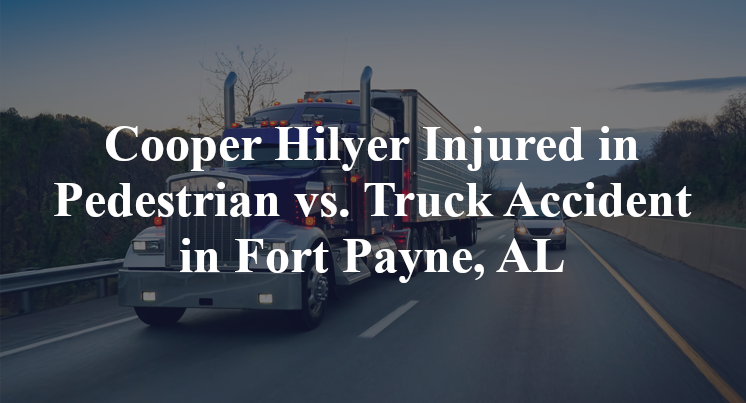Cooper Hilyer Injured in Pedestrian vs. Truck Accident in Fort Payne, AL
DeKalb County, AL — May 26, 2025, Cooper Hilyer was injured following a pedestrian versus truck accident at some point in the morning on Interstate Highway 59.
According to authorities, the accident took place on I.H. 59 in the vicinity between State Highway 35 and U.S. Highway 11.

Officials indicate that 18-year-old Cooper Hilyer had been assisting in getting another vehicle which had experienced a tire blowout out of the center median using a tow truck when the accident occurred. Preliminary reports state that, for as yet unknown reasons, an 18-wheeler entered the lane in which they were working to extricate the other vehicle and ended up hitting Hilyer.
The young man suffered serious injuries as a result of the collision and was transported to a local medical facility by EMS in order to receive immediate treatment. Authorities have recommended multiple charges against the person who had been behind the wheel of the 18-wheeler, according to reports. Additional details pertaining to this incident are not available at this point in time. The investigation is currently ongoing.
Commentary
When someone gets seriously hurt while trying to help another driver on the side of the road, it’s hard not to feel that something went seriously wrong. Based on the early reports, an 18-year-old was assisting with a disabled vehicle in the median of I-59 when a passing 18-wheeler veered into the area where they were working and struck him. What caused that truck to enter a clearly occupied lane is the critical question—and one that needs real answers, not assumptions.
What Needs Clarifying
At this stage, authorities are already recommending charges against the truck driver. That suggests they believe there was some level of avoidable error, but without knowing exactly what happened, it’s still important to approach the situation with a focus on evidence.
For example:
- Was the truck driver distracted—possibly using a phone or GPS?
- Were there warning lights, cones, or other indicators showing that people were working in the area?
- Was the truck traveling too fast for the conditions or failing to move over, as required by law when emergency or roadside assistance personnel are present?
- Were visibility and road layout factors, given the location near a median?
These are more than just procedural questions—they go to the heart of whether this crash was the result of inattention, negligence, or something else entirely. Investigating the crash should start with pulling ECM data from the truck, reviewing dash cam footage (if available), and checking the driver's cell phone records. And depending on the trucking company’s policies, it might be worth looking into how they trained or monitored that driver before this incident ever occurred.
Why Evidence Matters
I’ve handled cases like this before where the truth wasn’t obvious from the initial police report. In one case, an 18-wheeler veered into a work zone, striking a worker. The company claimed the driver had simply lost control. But a deeper investigation uncovered that the driver had a history of fatigue-related violations and was on his phone at the time of the crash. Without call records and ECM downloads, that wouldn’t have come to light.
That’s the point here: truck crashes like this aren’t just about the moment of impact. They’re about the choices—before and during—that lead to it. And if someone was seriously hurt while helping on the side of a highway, we need to be sure that every one of those choices gets examined closely.
Key Takeaways
- The key issue here is why an 18-wheeler entered a lane occupied by people assisting a disabled vehicle.
- A thorough investigation should include black box data, dash cam footage, and cell phone records.
- It's essential to determine whether proper roadside safety procedures were followed by both the victim and the truck driver.
- Early indications of fault must still be backed by hard evidence to ensure proper accountability.
- Serious injury cases like this show how high the stakes are when professional drivers fail to follow basic highway safety protocols.

“These are essential reads for anyone dealing with the aftermath of a truck wreck”– Attorney Cory Carlson